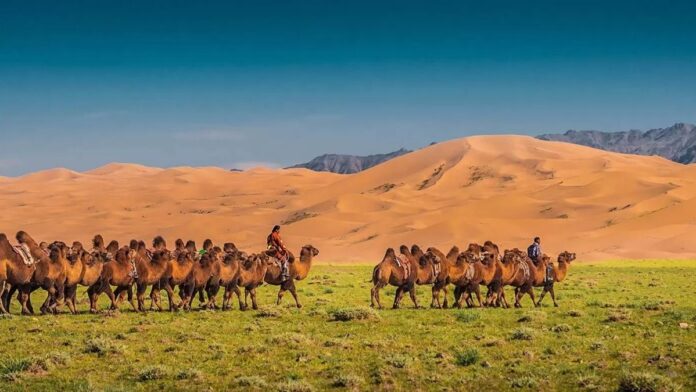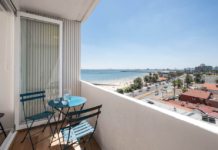If you’re thinking of a trip to Mongolia, there are a few things you need to know first. This huge country has a lot to offer tourists and it’s worth planning your trip well in advance.
In this blog post, we’ll give you all the information you need about traveling to Mongolia, from the best time of year to visiting visa requirements.
We hope this guide will help make your trip planning easier and help you have the most enjoyable journey of your life!
What is Mongolia?
Mongolia is a landlocked country in Central Asia. It’s bordered by Russia to the north, China to the east and south, and Kazakhstan and Kyrgyzstan to the west. Its capital city is Ulaanbaatar.
The total area of Mongolia is 1,564,102 square kilometers. The population of Mongolia is about 3 million people.
The official language of Mongolia is Mongolian. The main religions in Mongolia are Buddhism, Christianity, and Shamanism.
The economy of Mongolia is mainly based on agriculture and livestock farming. Important exports include wool products, gold, silver, and copper.
Tourism is also an important sector of the Mongolian economy with visitors from around the world visiting annually
Climate in Mongolia
Mongolia is situated in the central part of Eurasia. The country has a total area of 1,564,160 km² and a population of around 3 million people. The climate in Mongolia is continental with cold winters and summers.
The average temperature in winter is -12°C and in summer it reaches 34°C. There are four seasons in Mongolia – spring, summer, autumn, and winter.
The geographical features of Mongolia make it a landlocked country surrounded by mountains on three sides with the Gobi desert to the east. The country’s highest point is Mt. Bogd Khan (2,544m).
The biggest rivers are the Selenge River, the Tuul River, and the Bük-Terel River.
Mongolian nomads herded cattle, horses, sheep and camels before industrialization changed their life style forever.
Nowadays they live mainly off livestock herding, farming and tourism which plays an important role in the economy of this landlocked nation
Language in Mongolia
Mongolia is a landlocked country in Central Asia. The majority of the population speaks Mongolian, an agglutinative language that is closely related to Tibetan and shares many words with it. According to the 2002 census,
Mongolia has a population of 2,511,000 people. There are also sizable populations of Russians (close to 200,000), Kazakhs (about 100,000), and Chinese (around 60,000). In addition to the official languages, English is widely spoken and understood.
Most Mongols adhere to Buddhist beliefs. Religion has been present in Mongolia for centuries and remains an important part of everyday life.
Buddhism is practiced by a large percentage of the population and temples can be found throughout the country.
One common Buddhist practice is the offering of food to monks in order to gain relief from illness or other hardships.
Mongolia is home to some of the world’s highest mountains: Mount Elbrus at 5,642 meters (18,510 feet), Mount Khalta at 5,085 meters (16,510 feet), and Mount Genghis Khan at 4,516 meters (14,083 feet).
The country also contains vast areas of forests and barren deserts. Much of Mongolia’s natural resources are still undiscovered and there are plans to develop these resources as part of China’s “Belt and Road” initiative.
Religion in Mongolia
Mongolia is home to several religions, including Buddhism, Christianity, and Shamanism.
Religion is very important in Mongolia and is often a source of comfort for people during difficult times. In recent years, there has been a rise in the popularity of monasticism among Mongolians.
This is due in part to the fact that monasteries provide a place where monks can learn and practice their religion freely.
There are also many temples throughout Mongolia, many of which are open to the public.
These temples often contain impressive architecture and are frequented by tourists who want to see examples of Buddhist art.
The main religion practiced in Mongolia is Buddhism. Buddhists believe in one ultimate reality known as Dharma, which can be found throughout the universe.
There are different schools of Buddhism in Mongolia, each with its own beliefs and practices.
Christians also live in Mongolia, though they make up a small percentage of the population.
Churches abound throughout the country and believers frequently gather for services during festivals such as Easter and Christmas.
Christianity has had a significant impact on Mongolian culture and today many Mongolians are proud Christians
Money in Mongolia
Mongolia is one of the poorest countries in the world, with an estimated GDP per capita of only $5,000. Nomadic herders have long been a vital part of the Mongolian economy and their animals are a major source of income.
Agriculture is also an important sector, but it accounts for just 10 percent of GDP. The government is trying to develop other sectors,
such as mining and tourism, but it’s still very difficult to make a profit in Mongolia. In fact, even though the country has a population of around three million people, only about 60,000 tourists visit each year.
That’s because it’s very expensive to travel here and there are few facilities available to tourists. However, things are changing and tourism is on the rise. The number of tourists visiting Mongolia has grown by 50 percent over the past two years and this trend is likely to continue.
One reason for this growth is that Mongolians are increasingly looking for ways to earn money outside of their traditional occupations. Additionally,
Mongolia has developed a strong reputation as a safe destination thanks to its well-managed police force and effective security measures.
Moreover, Mongolia has some spectacular natural attractions that are worth visiting, such as Mount Elbrus in Russia and Lake Khovsgol in Kazakhstan.
Health in Mongolia
Mongolia is a landlocked country in Central Asia. With a population of around 3 million, it’s one of the world’s least-populous countries.
The country is landlocked between China and Russia, with a very small border with Kazakhstan.
Mongolia has a temperate climate and its terrain ranges from the Gobi Desert in the north to the mountains of the south.
The capital city, Ulaanbaatar, is on the banks of the Tuul River.
Mongolia has an estimated life expectancy of 71 years. The national disease burden is high due to tobacco smoking, alcoholism and obesity. About 36% of the population is undernourished. One in five children dies before reaching age 5 and about 45% of women will contract an STD during their lifetime.
HIV prevalence is about 0.5%. Disability-adjusted life years (DALYs) are high at 1 million for men and 800,000 for women. However,
there have been recent improvements in health indicators such as decreasing child mortality rates and increasing immunization rates among children aged 6-59 months old from 73% to 95%.
Thanks to its natural resources – including coal, oil, gas, minerals and water – Mongolia has been able to develop rapidly over recent decades thanks to significant investment by foreign companies and governments
Visa Requirements for Mongolia Travel
Mongolia is a landlocked country located in Central Asia. The country is bordered by Russia to the north, China to the east and south, and Kazakhstan to the west. The capital city of Mongolia is Ulaanbaatar.
To enter Mongolia you will need a valid passport with at least six months remaining validity and a visa. You can obtain a visa from a Mongolian embassy or consulate.
American citizens do not need a visa for tourist visits of up to 90 days per person, provided they have an onward ticket out of Mongolia and are not working on government-assigned duties. All other foreigners require a visa prior to travel.
The cost for visas varies depending on type but generally range from USD60-USD100. You must also carry your passport with you when travelling to Mongolia as proof of your identity and visa requirements.
Buying a Motorcycle in Mongolia
Motorcycles can be purchased in Mongolia with cash or credit cards. Many motorcycle dealerships are located outside of the main cities and offer good customer service and competitive prices.
It is important to research the types of motorcycles available before making a purchase, as there are many different models and brands on the market.
Most Mongolians are very proud of their motorcycles and take great care of them, so it is important to choose one that suits your needs and preferences.
Fun Things to do while Traveling to Mongolia
Things to do while travelling to Mongolia include exploring the ancient Gobi Desert and its many impressive sand dunes,
visiting the country’s vast horse farms, sampling the rich Mongolian cuisine, and savouring the monasteries and ger (yurts) that dot the landscape.
Other popular activities include hiking in the vast Altai Mountains or taking a camel ride through the Gobi Desert.
There’s plenty to keep visitors busy for days on end in this intriguing country.











